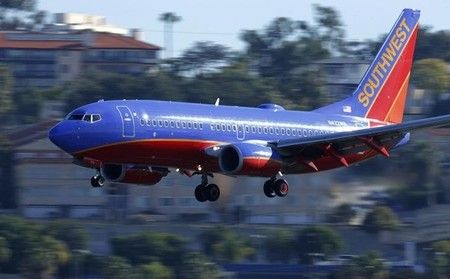Advertisement
Engine failure led to foot-long hole in Southwest airliner: agency

(Reuters) – An engine failure on a Southwest Airlines Co jet on Aug. 27 released debris that tore a 5 inch by 16 inch (13 cm by 41 cm) hole in the plane before it made a safe emergency landing in Pensacola, Florida, U.S. crash investigators said on Monday.
In an update to its probe of the Boeing Co 737’s rare engine failure, the U.S. National Transportation Safety Board (NTSB) said a fan blade separated from the engine and was not recovered, except for the base of the blade that was still attached to the aircraft.
The agency also said that during the accident engine debris impacted the plane’s side to create the hole above the left wing. The debris did not penetrate into the cabin interior, the agency said.
The plane, bound from New Orleans to Orlando with 99 passengers and five crew members aboard, lost cabin pressure and safely diverted to Pensacola. There were no injuries.
The investigation update still leaves unanswered what exactly caused the “uncontained” engine failure, a rare and hazardous event in which components rapidly exit an engine and can collide with the aircraft. The NTSB said in a statement that it still must review the engine’s maintenance records and examine blade surfaces for cracks.
Representatives for Southwest and General Electric Co, which produced the engine with Safran SA in a joint venture known as CFM International, said the companies continue to work closely with the NTSB on the investigation.
The aircraft has been released to Southwest, which has started the repair process, a spokeswoman for the airline said.
(Reporting by Jeffrey Dastin in New York; Editing by Will Dunham)










